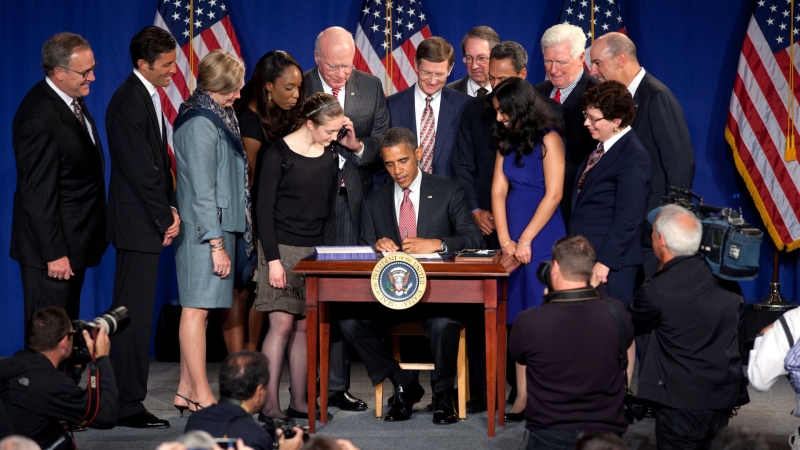15th UPC Draft Rules of Procedure open for Public Consultation
Yesterday, the much awaited website of the UPC Preparatory Committee went live under the domain www.unified-patent-court.org. A main purpose of this website is to inform the public about the Committee’s work and the UPC as such (see e.g. Q&A section). One of the most important tasks of the Committee is the preparation of the Rules of Procedure of the future Unified Patent Court.
After an inofficial 15th Draft has been leaked early June, the official 15th draft of the Rules of Procedure has been published yesterday and opened for
public consultation until 1 October 2013.
Written comments are to be submitted to secretariat@unified-patent-court.org. So, please, colleagues, readers, and fellow bloggers, study the official draft and make submissions to the Preparatory Committee if necessary.
The further procedure after closure of the public consultation is explained as well:
[...] the Committee shall after closure of the written phase of the public consultation ask the Drafting Committee to evaluate the contributions received and to make proposals and comments ensuing from the public consultation. Further, the Committee intends to organise a public hearing on the draft rules of procedure in early 2014. The European Commission shall be asked to advise on the compatibility of the Rules of Procedure with European Union law. This will form the basis for the Committee’s Legal Framework Working Group to prepare the draft Rules of Procedure for approval by the Committee. As with all of the Committee’s preparatory work, also the Rules of Procedure will need to be adopted by the UPC’s Administrative Committee once it has been established.
The official version of the 15th draft differs form the inofficial version in a number of ways. One significant difference relates to Rule 286 governing, inter alia, the conditions under which non-lawyers (i.e. professionals that are not attorneys-at-law) may independently represent cases before the UPC. This rule has previously been criticised on this blog because of its striking lack of clarity (see here for the inofficial 15th draft version and here for the 14th draft version), as the 14th draft contained the unclear term “jurist” and the inofficial 15th draft contained an even more unclear recursive definition of the term “lawyer”.
Clarified Rule 286 (1) of the 15th draft RoP now reads as follows, with the crucial sentence highlighted:
A representative pursuant to Article 48(1) of the Agreement shall lodge at the Registry a certificate that he is a lawyer authorised to practise before a court of a Contracting Member State. Lawyers within the meaning of Article 48(1) of the Agreement are also persons possessing a law degree (jurist) who are authorised by the Swedish Patent Attorneys Board or equivalent body in a Contracting Member State. They shall lodge a certificate evidencing such authorisation. In subsequent actions the representative may refer to the certificate previously lodged.
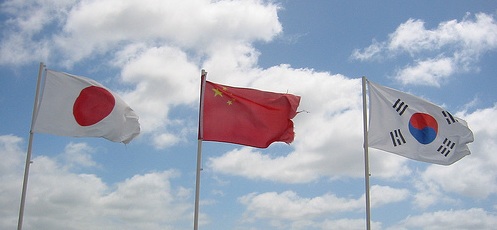 One of our most successful presentations on business trips to Asia in recent years was the one about “Dos and Don’ts in European Filings” covering many practical hints that should be observed – possibly already at the drafting stage – upon filing direct EP applications with the EPO or entering the EP regional phase via the PCT route.
One of our most successful presentations on business trips to Asia in recent years was the one about “Dos and Don’ts in European Filings” covering many practical hints that should be observed – possibly already at the drafting stage – upon filing direct EP applications with the EPO or entering the EP regional phase via the PCT route.
At KSNH we are very happy to announce that an article by my colleagues Jochen Höhfeld and Shino Tanaka summarising this lecture has been recently accepted for publication by major IP journals in Japan, China, and Korea:
Japanese:
JPAA Journal “Patent”, Vol.66, No.4, 2013.3, pp. 14-19
China IP News, 2013-05-31, issue 1427, p. 8 (part 1)
China IP News, 2013-06-07, issue 1429, p. 8 (part 2)
Korean:
KPAA Association Journal, May 20, 2013, pages 6, 7
(see also here, No. 162 제810호, 2013.05.20)
Basically, the articles cover the following topics:
Claim Drafting
- Limitation of number of claims
- One independent claim per category
- Unity of the invention
- Reference numnerals
- Multiple independent claims
- Functional claim features
- Clarity of the claim language
- Claims in two-part-form (Jepson-type claims)
- Claim amendments
- Number of pages
- Basis for claim amendments
- Discussion of prior art
- Abstract
- Incorporation by reference
Organisational issues:
- Format of pages
- Entering the regional phase before the EPO (Euro-PCT)
- Regional pahse entry with the EPO acting as International Search Authority
- Designation of the inventor
- Divisional applications before the EPO
Aspects of the UPC (2): Sunrise Period and Opt-out Fee
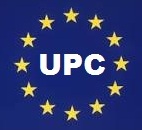 In this earlier posting on the transitional scheme and opt-out options we explained that the future European patent system will provide two different routes for patent protection, (i.) the classical EP bundle patent and (ii.) the new European Patent with unitary effect but, in the long run, only one judicial system namely the Unified Patent Court as established by the Unified Patent Court Agreement (UPCA).
In this earlier posting on the transitional scheme and opt-out options we explained that the future European patent system will provide two different routes for patent protection, (i.) the classical EP bundle patent and (ii.) the new European Patent with unitary effect but, in the long run, only one judicial system namely the Unified Patent Court as established by the Unified Patent Court Agreement (UPCA).
During an at least seven-years long transitional period, however, proprietors/applicants of EP patents/applications can opt-out from the UPC system and ensure responsibility of the present European post-grant system with infringement and invalidity suits before national courts separately for each single nationalised EP patent, this circumventing the unitary effect of UPC proceedings (Art 83 UPCA).
We also pointed to the fact that there is a certain risk for EP patent proprietors to get stuck with the new UPC system and its unitary effect if, e.g, an invalidity suit is filed by a competitor before the proprietor can file an opt-out request for his patent(s).
Before this background, the recently published 15th Draft of the Code of Procedure (mark up version) provides a new Rule 5 (8) RoP implementing a sunrise period giving EP proprietors/applicants the option to opt-out before the UPC Agreement actually enters into force, thus preventing third parties to file legal suits by which a patent gets stuck with the UPC system:
An Application to opt out may be lodged with the European Patent Office after a date to be announced by the European Patent Office and before the coming into effect of the Agreement. [...]
At the time being, the length of the sunrise period is unknown.
Also new in comparison to the 14th draft of the Rules of Procedure are Rules 5 (3) and (6) RoP requiring fees for opt-out and withdrawal of opt-out (cf. also Rule 370 (2) RoP). The amount to be payed is not yet known, however, there are speculations that it will lie in the range of 200 to 400 EUR, which may sum up to a considerable amount of money if large portfolios are involved.
Unitary Patent Court: Are lawyers different from lawyers?
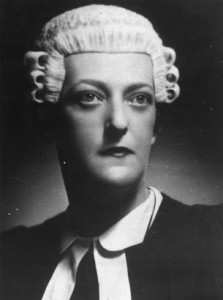 In this earlier posting we speculated about the representation rights of national German and UK patent attorneys before the new Unified Patent Court, based on the wording of Art 48 UPCA and the somewhat odd formulation of Rule 286 of the 14th Draft of the Rules of Procedure:
In this earlier posting we speculated about the representation rights of national German and UK patent attorneys before the new Unified Patent Court, based on the wording of Art 48 UPCA and the somewhat odd formulation of Rule 286 of the 14th Draft of the Rules of Procedure:
[...] Lawyers within the meaning of Article 48(1) of the Agreement are also jurists authorised to practice in patent related matters before a court in a Contracting Member State and they shall lodge a certificate evidencing such authorisation. [...].
We preliminarily concluded that the definition of the term “jurists” may extend the group of lawyers according to Art. 48 (1) UPCA by certain other legal professionals with a specific expertise, such as national patent attorneys that are allowed to represent their clients in national civil proceedings, e.g. German patent attorneys who are authorised to present invalidity cases before the German Federal Patent Court (BPatG) and the Federal Court of Justice (BGH).
Now the 15th Draft of the Code of Procedure (mark up version) has found the daylight – not on an official server of the Preparation Committee, but in a somewhat obscure way via the private US-based mailchimp service.
Besides other interesting amendments in comparison to the the 14th draft (see e.g. here), Rule 286 CoP has been amended by replacing the term “jurist” by the term “lawyer”. The new passage thus reads:
Lawyers within the meaning of Article 48(1) of the Agreement are also lawyers authorised to practice in patent related matters before a court in a Contracting Member State and they shall lodge a certificate evidencing such authorisation.
What is the sense of this – mathematically speaking - recursive definition?
Article 48 (1) UPCA generally covers “lawyers authorised to practise before a court of a Contracting Member State”, i.e. all attorneys-at-law of the Contracting member states. We thus have two definitions, whereas the second defines is a genuine subset of the first:
- lawyers authorised to practise before a court of a Contracting Member State, and
- lawyers authorised to practice in patent related matters before a court in a Contracting Member State.
What is the sense in clarifying that a genuine subset of the group of entitled lawyers is entitled as well?
The most probable answer is that this recursive – and thus unclear – definition is nothing more than a drafting error caused by a quick-and-dirty approach to end speculations like the above ones about representation rights of some national patent attorneys. In the present form, Rule 286 (1) 15th Draft CoP might then just be useless and needs to be cancelled in the 16th draft.
On the other hand, one may also argue that the existence of Rule 286 (1) changes (downgrades) the scope of the term “lawyer” in Art 48 (1) UPCA to “person practicing law” or simply “legal counsel”, which would immediately render the two definitions meaningful again, as they would read
- legal counsels [generally] authorised to practise before a court of a Contracting Member State, and
- lawyers authorised to practice [only] in patent related matters before a court in a Contracting Member State.
The first definition would then cover attorneys-at-law and the second, again, such national patent attorneys that are authorised to represent certain patent cases before national civil courts. In this case, however, the amendmet would be useless as well as it does not change anything as compared to the 14th draft version.
Regardless of the way Rule 286 (1) may be interpreted in the present form or amended in future, it certainly is not an indication of the utmost care the Preparation Committee should pay to the Rules of Procedure as the backbone of the new court system.
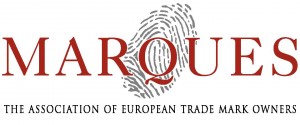 In February this year the European trademark community took note of a leaked version of the European Commissions’s draft trademark legislation in reaction to the widely discussed Study on the Overall Functioning of the European Trademark System presented by the Max Planck Institute for Intellectual Property in February 2011 (pdf, 4.5 MB).
In February this year the European trademark community took note of a leaked version of the European Commissions’s draft trademark legislation in reaction to the widely discussed Study on the Overall Functioning of the European Trademark System presented by the Max Planck Institute for Intellectual Property in February 2011 (pdf, 4.5 MB).
The so called ‘leaked proposal’, which immediately received a considerable press coverage (see e.g. WTR or MIP), basically consists of two draft regulations and one draft directive:
- draft amended Council Regulation No 207/2009 on the
CommuniyEuropean Trade Mark, - draft amended Regulation (EC) No 2868/95 on the fees payable to the OHIM,
- proposal for a Directive to approximate the laws of the Member States relating to trademarks (Recast).
The leaked proposal is a pre-final text which gives extensive insight into the EU Commission’s plans to substantively refurbish the Community Trademark (CTM) system as we know it today.
The reasons why and by whom the legislative proposal was ‘leaked’ instead of being officially published on the EU servers lie in the dark, but it can be assumed that the political intentions outweigh the legal ones. As the drafts have been sent, inter alia, to the member organisations of the so called OAMI Users’ Group, a consortium of international NGO’s active in the IP sector and accredited to the OHIM, the leaker apparently intends to provoke a reaction of stakeholders, for instance to test the acceptance of the new legislation in a more conspirative way instead of risking open and public criticism.
The MARQUES association considers itself as a defender of trademark owner’s and system user’s interests. Compared to other member organisations of the OAMI Users’ Group, MARQUES appears to be more interested in a public discussion as it now again involved the public in a discussion that many other stakeholders consider a topic for closed expert circles only. The extensive comments (pdf, also here) published yesterday (20 March 2013) also include a detailled summary of the substance of the draft legislation.
By this open approach MARQUES refuses to become a silent accomplice of the leaker and his political interests and, even more important, reminds lawmakers that openness and public consultation are vital to a democratic community and the acceptance of its laws.
Aspects of the UPC (1): Transitional Scheme and Opt-Out
 The new European patent system will provide two concurrent routes to patent protection on the continent, (i.) the classical EP bundle patent, “which does not benefit from unitary effect by virtue of EU Reg No 1257/2012” and thus has to be validated in each EPC member state where protection is sought and (ii.) the European Patent with unitary effect effective in all ‘contracting member states’ that have signed and ratified the Unified Patent Court Agreement (UPCA) at the time of grant.
The new European patent system will provide two concurrent routes to patent protection on the continent, (i.) the classical EP bundle patent, “which does not benefit from unitary effect by virtue of EU Reg No 1257/2012” and thus has to be validated in each EPC member state where protection is sought and (ii.) the European Patent with unitary effect effective in all ‘contracting member states’ that have signed and ratified the Unified Patent Court Agreement (UPCA) at the time of grant.
While Unitary Patents are mandatorily subject to proceedings and lawsuits before the Unified Patent Court (Art 3 (a) UPCA), this is not the case for classical EP patents (cf. Art 3 (c), (d) UPCA). For EP patents and applications pending at the date of entry into force of the Agreement, Article 83 UPCA defines a rather liberal transitional scheme allowing EP patent proprietors and applicants to make use of the present European post-grant patent system for many years to come. This transitional scheme consists of two basic elements, a transitional period and an opt-out mechanism.
With Document 7265/13 dated March 08, 2013, the Irish EU Presidency has published some information concerning setting up of the Preparatory Committee in the context of the Agreement on a Unified Patent Court. A meeting of the Friends of the Presidency group (Patents; see Document CM 1560/13) was convened on February 27, 2013, with the objective of both hearing and considering delegations’ views on how this Preparatory Committee could be organised. According to the recently published Document, a clear consensus emerged from the Signatory States endorsing a non-paper circulated by The Netherlands and Sweden, including the proposal that the work be driven by the Member States, and thus outside the framework of existing institutional structures. In this latter respect, a number of Signatory States offered to put their resources – human and/or logistical – at the service of the Preparatory Committee once it begins its work. The European Commission offered its expertise, as and when requested by the Preparatory Committee.
Now, the Permanent Representatives Committee (COREPER) is invited to take note:
- of the agreed position of the Signatory States regarding the Preparatory Committee of the Agreement on a Unified Patent Court, as set out in the paper contained in the Annex to Document 7265/13 and in the cover note thereof;
- of the intention of the Presidency to convene the inaugural meeting of the Preparatory Committee on 26 March 2013 in Brussels; and
- that Council, at the appropriate level, will be kept informed of progress of the work of the Preparatory Committee when needed.
A list of four main tasks to be elaborated in groups with project teams can be identified:
- Legal framework,
- Financial aspects,
- IT & Facilities, and
- Human resources & Training.
The final package of the Leahy-Smith America Invents Act (H.R.1249, pdf) will enter into force on 16 March 2013 (for a list of amendments and their effective dates, see here). By this date, the most significant amendments of the new Act will enter into force, namely the transformation from the traditional first-to-invent regime to the new first-inventor-to-file regime.
Besides reducing the USPTO’s backlog of approx. 680.000 patent applications and improving patent quality, the main objective of the America Invents Act is to harmonise the US patent system better with international patent law standards and by that facilitate second filings of US applicants in foreign jurisdictions.
This is indeed a brilliant idea, not only for US applicants but also for European applicants and practitioners, as it will align the US system closer with the European patent system. However, event for those legal instruments that are clearly adapted to the European point of view, important differences remain. Some of those tiny differences that may have a huge impacts on practice are outlined below:
On March 16, 2013, the final (third) package of the Leahy-Smith America Invents Act (H.R.1249, pdf) will enter into force. This will include the transition from the traditional US fist-to-invent system to the first-to-file system as used in the rest of the world. In a recent press release the USPTO announced publication of the
- Examination guidelines for implementing the first inventor to file provisions and the
- Final rules to implement the first inventor to file provisions.
On this blog’s German sister blog ksnh::jur we recently published a series of three postings dedicated to the changes the America Invents Act causes to US patent law. As this piece of US legislation implements one of the most important reforms of internation IP law in recent years, its provisions, legal effects and possibel shortcommings have been extensively – and partly exellently – discussed by so many US blogs that there surely is no need to add another synopsis on a Europe-focussed IP blog like this.
However, as a large portion of our regular readers live and practice in the German-speaking part of Europe, we thought that some of them might appreciated to read about this topic in their mother tongue. The three articles are structured parallel to the three packages of the AIA that enter(ed) into force on 16 Sep 2011 and 16 Sep 2013 and on 16 Mar 2013:
Die Änderungen im US-Patentrecht durch den ‘America Invents Act’
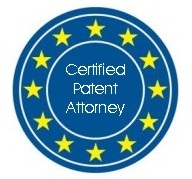 Inspired by this discussion of our recent posting on the latest draft UPC rules of procedure it appears to be high time to have a closer look into Article 48 UPC and related Rule 286 RoP in order to possibly figure out the legislator’s idea of representation rights.
Inspired by this discussion of our recent posting on the latest draft UPC rules of procedure it appears to be high time to have a closer look into Article 48 UPC and related Rule 286 RoP in order to possibly figure out the legislator’s idea of representation rights.
As European and German patent attorneys we still remember the recommendation of the 2006 Venice Patent Judges Symposium according to which only “attorneys-at-law who are fully entitled to represent parties in ordinary civil proceedings in the courts of first instance of the convention states” should be authorised to represent cases before the UPC (see Venice II resolution, page 11, item 5). Later, at the peak of the lobbying battle for representation rights (see e.g. here and here) also the European Parliament’s JURI Committee and its influential rapporteur Klaus-Peter Lehne, an attorney-at-law and partner of international law firm Taylor Wessing, urged it is of “utmost importance” that
the parties should be represented only by lawyers authorised to practise before a court of a Contracting Member State; the representatives of the parties might be assisted by patent attorneys who should be allowed to speak at hearings before the Court [2011/2176 (INI)]
Different voices came from industry organisations, patent practitioners and academia, who raised for good reasons (see here, here, here) that European Patent Attorneys should be authorised to represent their clients before the UPC as well.
Before this background, Article 48 UPCA can be understood as an acceptable compromise:
(1) Parties shall be represented by lawyers authorised to practise before a court of a Contracting Member State.
(2) Parties may alternatively be represented by European Patent Attorneys who are entitled to act as professional representatives before the European Patent Office pursuant to Article 134 of the EPC and who have appropriate qualifications such as a European Patent Litigation Certificate.
(3) The requirements for qualifications pursuant to paragraph 2 shall be established by the Administrative Committee. A list of European Patent Attorneys entitled to represent parties before the Court shall be kept by the Registrar.
(4) … (7)
According to this provision, basically three groups of professionals are authorised to independently represent cases before the UPC, namely
- Lawyers,
- European Patent Attorneys having the European Patent Litigation Certificate, and
- European Patent Attorneys having an appropriate qualification.
The k/s/n/h::law blog
Some of the patent attorneys of the KSNH law firm have joined their efforts to research what is going on in the various branches of IP law and practice in order to keep themselves, their clients as well as interested circles of the public up to date. This blog is intended to present results of such efforts to a wider public.
Blog Archives
- November 2013 (2)
- October 2013 (1)
- September 2013 (1)
- August 2013 (2)
- July 2013 (3)
- June 2013 (5)
- March 2013 (5)
- February 2013 (4)
- January 2013 (5)
- December 2012 (5)
- November 2012 (5)
- July 2012 (5)
- June 2012 (8)
- May 2012 (5)
- April 2012 (3)
- March 2012 (4)
- February 2012 (5)
- January 2012 (6)
- December 2011 (12)
- November 2011 (9)
- October 2011 (9)
- September 2011 (4)
- August 2011 (7)
- July 2011 (4)
- June 2011 (1)
Blog Categories
- business methods (6)
- EPC (7)
- EPO (12)
- EU law (92)
- ACTA (8)
- CJEU (4)
- Comitology (1)
- competition law (2)
- Enforcement (6)
- EU Unified Patent Court (62)
- FTA India (1)
- TFEU (2)
- Trade Marks (5)
- European Patent Law (37)
- German Patent ACt (PatG) (1)
- German patent law (5)
- Germany (6)
- Pirate Party (3)
- International Patent Law (4)
- PCT (2)
- IP politics (10)
- licenses (2)
- Litigation (5)
- Patentability (7)
- Patents (12)
- Piratenpartei (2)
- Software inventions (10)
- Uncategorized (9)
- Unitary Patent (24)
- US Patent Law (4)
Comments
- kelle on Germany: Copyright Protection More Easily Available For Works Of “Applied Arts”
- Time Limits & Deadlines in Draft UPCA RoP: Counting The Days - KSNH Law - Intangible.Me on Wiki Edition of Agreement on Unified Patent Court Agreement (UPCA)
- Time Limits & Deadlines in Draft UPCA RoP: Counting The Days | ksnh::law on Wiki Edition of Agreement on Unified Patent Court Agreement (UPCA)
- Wiki Edition of Agreement on Unified Patent Cou... on Wiki Edition of Agreement on Unified Patent Court Agreement (UPCA)
- European Commission Takes Next Step Towards Legalising Software Patents in Europe | Techrights on EU Commission publishes Proposal of amendend Brussels I Regulation for ensuring Enforcement of UPC Judgements
Blogroll
- 12:01 Tuesday
- America-Israel Patent Law
- Anticipate This!
- AwakenIP
- BlawgIT
- BLOG@IPJUR.COM
- BP/G Radio Intellectual Property Podcast
- Broken Symmetry
- Class 46
- Director's Forum: David Kappos' Public Blog
- Gray on Claims
- I/P UPDATES
- IAM Magazine Blog
- Intellectual Property Intelligence Blog
- IP Asset Maximizer Blog
- IP CloseUp
- IP Dragon
- IP Watch
- IP Watchdog
- IPBIZ
- ipeg
- IPKat
- ITC 337 Law Blog
- Just a Patent Examiner
- K's Law
- MISSION INTANGIBLE
- Patent Baristas
- Patent Circle
- Patent Docs
- Patently Rubbish
- PatentlyO
- Patents Post-Grant
- Reexamination Alert
- SPICY IP
- Tangible IP
- The 271 Patent Blog
- The Intangible Economy
- THE INVENT BLOG®
- Think IP Strategy
- Tufty the Cat
- Visae Patentes
The KSNH blogging landscape


This blog and the German-language sister blog k/s/n/h::jur link to the two popular and privately run blogs IPJur und VisaePatentes and continue their work and mission with a widened scope and under the aegis of our IP law firm.
ksnhlaw on Twitter
- No public Twitter messages.
 KSNH::JUR Feed (german)
KSNH::JUR Feed (german)- Ist Verschlüsselung passé? September 6, 2013Auf verschiedenen Feldern beruflicher Praxis ist dafür zu sorgen, dass Kommunikation vertraulich bleibt. Die trifft beispielsweise für Ärzte zu, aber auch für Anwälte, darunter auch Patentanwälte. Einer der zahlreichen Aspekte, die in diesem Zusammenhang eine Rolle spielen, ist die Technik, um die Vertraulichkeit beruflicher Kommunikation sicherzustellen. Wa […]
- EU-Einheitspatent: Demonstrativer Optimismus und Zahlenmystik allerorten – Naivität oder politische Beeinflussung? June 26, 2013Nach mehreren vergeblichen Anläufen zur Schaffung eines EU-weiten Patentsystems wurde 1973 als Kompromiss das Europäische Patentübereinkommen unterzeichnet, welches unabhängig von der seinerzeit noch EWG genannten Europäischen Union System zur zentralisierten Patenterteilung mit nachgeordnetem Einspruchsverfahren durch das Europäische Patentamt schuf. Wie wi […]
- Moderne Zeiten oder: DPMA und Patentgericht streiten über die elektronische Akte April 25, 2013Bekanntlich hat das Deutsche Patent- und Markenamt (DPMA) im Jahre 2013 mit der rein technischen Fertigstellung der Einrichtungen zur elektronischen Akteneinsicht einen wichtigen Meilenstein seines Überganges von der Papierakte zur “elektronischen Akte” erreicht. Im DPMA werden aber bereits seit dem 01. Juni 2011 Patente, Gebrauchsmuster, Topografien und erg […]
- Gutachten zu Forschung, Innovation und technologischer Leistungsfähigkeit Deutschlands 2013 March 11, 2013Unter dem Datum vom 28. Februar 2013 ist die Bundestags-Drucksache 17/12611 veröffentlicht worden Sie trägt den Titel Unterrichtung durch die Bundesregierung - Gutachten zu Forschung, Innovation und technologischer Leistungsfähigkeit Deutschlands 2013. Die Bundesregierung legt dem Deutschen Bundestag seit dem Jahr 2008 […]
- 3D-Printing: Zum Filesharing von 3D-Modelldaten February 25, 2013In meiner kleinen zuvor angekündigten Reihe über rechtliche Aspekte des 3D Printing komme ich heute auf die Frage zu sprechen, ob die Hersteller von Gerätschaften es hinnehmen müssen, wenn Ersatztreile davon – vom Brillengestell über Smartphone-Gehäuseteile bis hin zu Rastenmähermotor-Abdeckungen – gescannt und die daraus […]
- Ist Verschlüsselung passé? September 6, 2013

